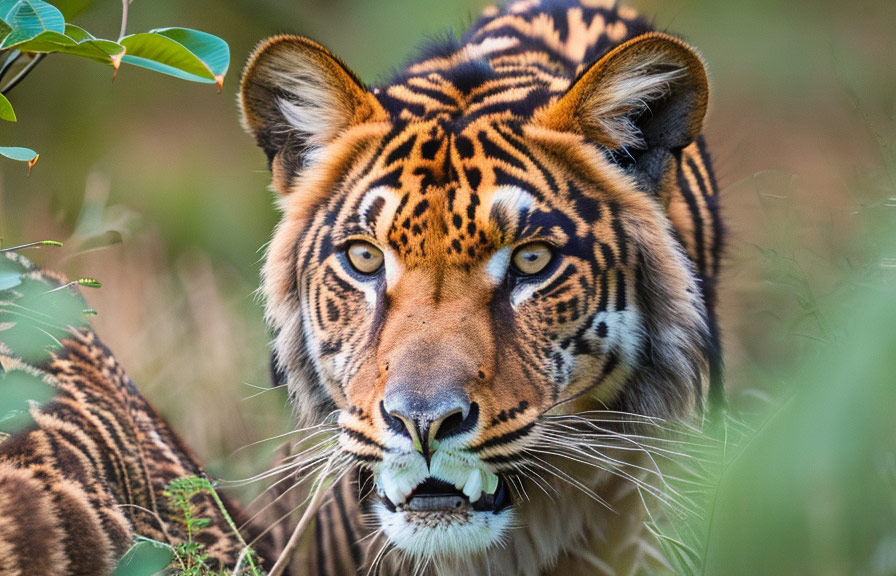Did you know that over 8.7 million species are believed to exist on earth? with such an astounding number, it's no wonder that wildlife photography is a popular pastime that attracts enthusiasts and professionals alike. if you've ever been captivated by breathtaking images of animals in their natural habitats, you're
In the right place! in this post, we'll explore how to find and photograph wildlife, and discuss the best cameras and lenses for wildlife photography.

First steps: finding and photographing wildlife
Before we dive into the world of cameras and lenses, let's take a moment to appreciate the art of finding and photographing wildlife. to capture stunning images of animals, you'll need plenty of patience, a keen eye, and a deep understanding of your subjects.
1. research and plan
Begin by researching the wildlife in your chosen location. familiarize yourself with their habits, preferred habitats, and the best times to spot them. knowing when animals are active and where they're likely to be found can drastically increase your chances of photographing them.
2. blend in
Dress in clothing that'll help you blend into your surroundings and minimize your impact on the environment. opt for neutral, earthy colors that won't draw attention to yourself. additionally, consider using a portable hide or blind to camouflage your presence further.
3. patience is key
Wildlife photography is often a waiting game. be prepared to spend hours waiting for the perfect moment. remember, animals are unpredictable, and capturing a fantastic shot may require multiple attempts.
4. practice ethical photography
Always prioritize the well-being of the animals you're photographing. maintain a safe distance, avoid disturbing their natural behavior, and never bait or harass wildlife to get a shot.
The best cameras for wildlife photography
Now that we have a better understanding of what it takes to photograph wildlife, let's discuss the best cameras for the job. here are our top picks:
1. nikon d500
The nikon d500 is a top choice for wildlife photography, thanks to its excellent autofocus system, high-speed continuous shooting, and compatibility with a wide range of lenses. its 20.9-megapixel aps-c sensor delivers high-quality images, and its robust build is perfect for handling the rigors of outdoor photography.
2. canon eos 7d mark ii
The canon eos 7d mark ii boasts a 20.2-megapixel aps-c sensor, an advanced 65-point autofocus system, and a fast 10 frames per second (fps) continuous shooting capability. its rugged design is well-suited for wildlife photography, and its compatibility with an extensive selection of lenses makes it a versatile choice.
3. sony a9 ii
The sony a9 ii is a full-frame mirrorless camera that offers superior performance in a compact body. it features a 24.2-megapixel sensor, an advanced autofocus system with 693 phase-detection points, and an impressive 20 fps continuous shooting speed.
Its silent shutter mode is a major bonus for wildlife photography, as it allows you to capture images without disturbing your subjects.
4. olympus om-d e-m1 mark iii
For those who prefer a smaller, lightweight option, the olympus om-d e-m1 mark iii is an excellent choice. this micro four thirds camera has a 20.4-megapixel sensor, a 121-point autofocus system, and a continuous shooting speed of up to 18 fps.
It also boasts impressive in-body image stabilization and a weather-sealed design, making it ideal for wildlife photography.
The best lenses for wildlife photography
Choosing the right lens is just as crucial as selecting the perfect camera. here are some of the best lenses for wildlife photography:
1. nikon af-s nikkor 200-500mm f/5.6e ed vr
This versatile telephoto zoom lens offers a wide focal length range while maintaining a constant f/5.6 aperture. it is compatible with nikon's full-frame and aps-c cameras and features built-in vibration reduction to help minimize camera shake.
2. canon ef 100-400mm f/4.5-5.6l is ii usm
This popular telephoto zoom lens from canon is known for its sharp image quality and versatile focal length range. its built-in image stabilization and weather-sealed design make it a reliable choice for wildlife photography.
3. sony fe 100-400mm f/4.5-5.6 gm oss
Designed for sony's full-frame mirrorless cameras, this telephoto zoom lens offers a flexible focal length range and excellent image quality. its optical steadyshot image stabilization helps reduce camera shake, while the fast autofocus system ensures you won't miss a moment.
4. panasonic leica dg vario-elmar 100-400mm f/4-6.3 asph
For micro four thirds users, this panasonic leica lens offers an impressive 200-800mm equivalent focal length range. its image stabilization and high-quality optics make it an excellent option for wildlife photography.
Fun fact: the rare and elusive spirit bear
One fascinating and little-known wildlife subject is the spirit bear, also known as the kermode bear. found in the great bear rainforest of british columbia, canada, these rare white-coated black bears are not albinos, but rather the result of a unique genetic trait.
With only an estimated 400 spirit bears in existence, capturing an image of one is a true wildlife photography achievement.
Conclusion
Wildlife photography is a thrilling and rewarding pursuit that allows you to connect with nature on a deeper level. by understanding your subjects, being patient, and choosing the right equipment, you can capture breathtaking images of animals in the wild.
Whether you're a seasoned pro or a budding enthusiast, we hope this guide has provided valuable insights and inspiration for your next wildlife photography adventure. so grab your camera and lens, head out into nature, and immortalize the beauty of the world's diverse wildlife.
